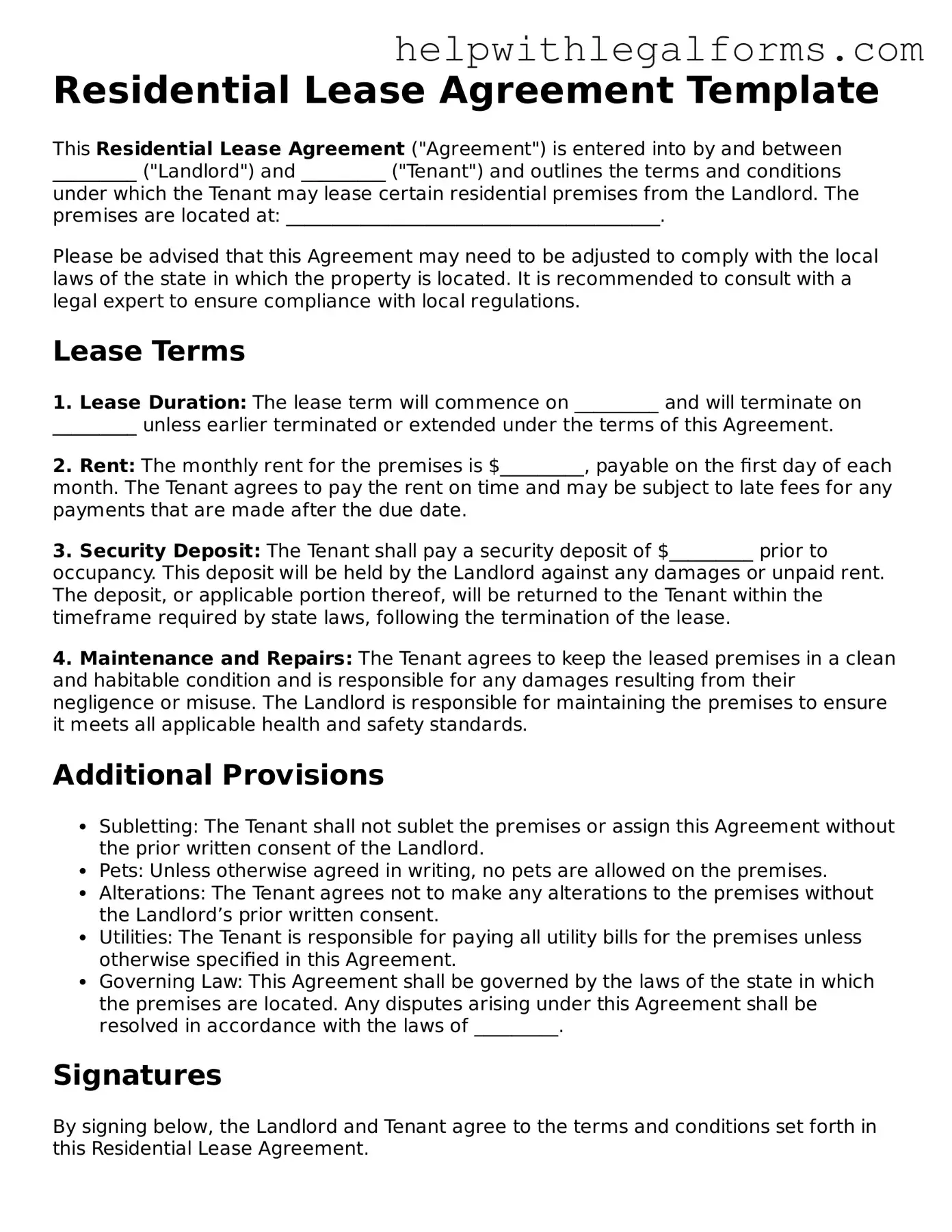What is a Lease Agreement?
A Lease Agreement is a binding legal contract between a landlord and a tenant that outlines the terms and conditions of renting property. It includes information on the duration of the lease, monthly rent, security deposit amount, and the rights and responsibilities of both the landlord and the tenant. This document ensures that both parties understand their obligations, providing a level of security and clarity.
How long does a standard Lease Agreement last?
Most Lease Agreements are set for a fixed term. Typically, this term is one year, but lease durations can vary. Some agreements might be for a shorter period, such as 6 months, or they might be month-to-month, which offers flexibility to both the landlord and the tenant to change or terminate the agreement with proper notice, often 30 days.
Can a Lease Agreement be terminated early, and if so, how?
Yes, a Lease Agreement can often be terminated early, but the conditions for doing so must be included in the agreement itself. Common grounds for early termination include mutual agreement between landlord and tenant, significant breach of the lease terms by the other party, or under specific conditions allowed by law, such as military service. Early termination usually requires notice, often 30 days, and may involve a penalty or forfeiture of the security deposit.
What happens if a Lease Agreement is violated?
If either party violates the Lease Agreement, there can be consequences such as legal action, financial penalties, or loss of the security deposit. For example, if a tenant fails to pay rent, the landlord may have the right to evict them after providing the required notice. Similarly, if a landlord fails to maintain the property, the tenant may have the right to withhold rent or even break the lease under certain conditions.
Are there different types of Lease Agreements?
Yes, there are several types of Lease Agreements, tailored to specific renting situations. The most common is the Residential Lease Agreement for renting homes, apartments, or other dwellings. For commercial property, a Commercial Lease Agreement is used. There are also Sublease Agreements, where the original tenant sublets the property to another tenant, and Month-to-Month Lease Agreements, which do not have a set end date and can be terminated by either party with proper notice.
Is a verbal Lease Agreement legally binding?
While verbal agreements can form a binding lease in some jurisdictions, they are not recommended. The lack of documentation makes enforcing the terms very challenging, and misunderstandings about the agreement can easily arise. For clarity, security, and legal protection, a written Lease Agreement is strongly advised, detailing all terms and signed by both parties.
